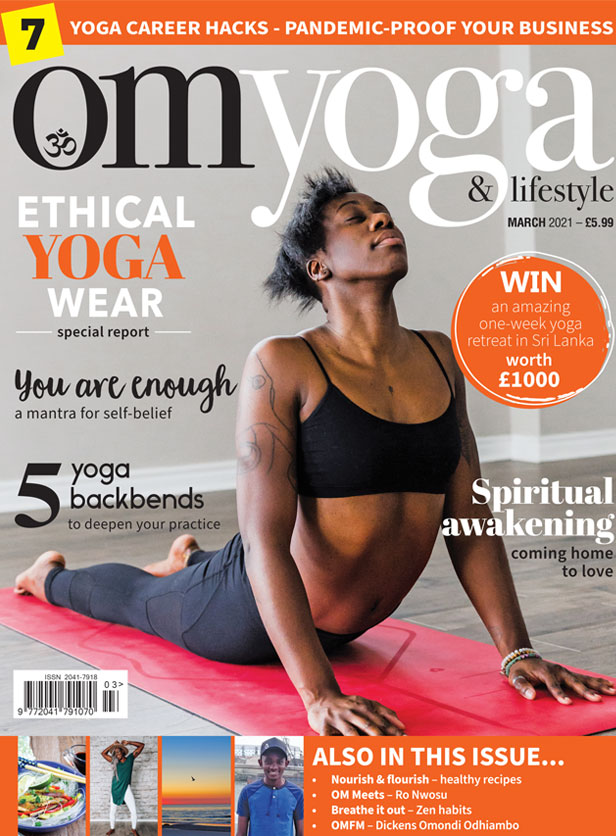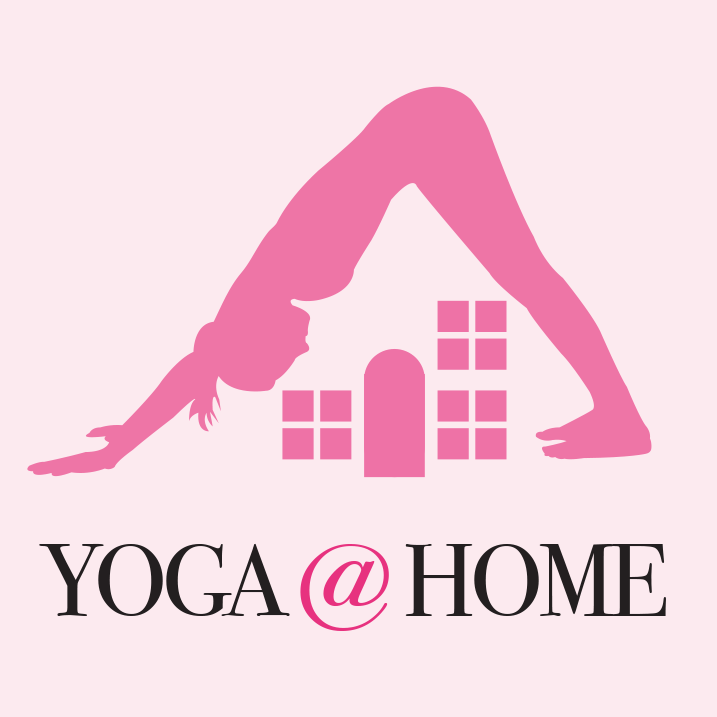
Yoga Backbends
5 postures to deepen your backbends safely and comfortably. By Monica Arellano
Deepening your backbends isn’t about learning more complex postures, but an opportunity to better understand your own spine and mobility. Rarely do we bring our spines into extension throughout a normal day…however, it’s vital in creating balance and strength throughout the spinal column. Expanding your backbend practice is a great way to open the chest, and improve your posture. Here are five postures and drills to either warm up the body before a backbending practice or to establish patterns in the body that will be useful in any backbend posture, like Urdhva Dhanursasna or Ustrasana.
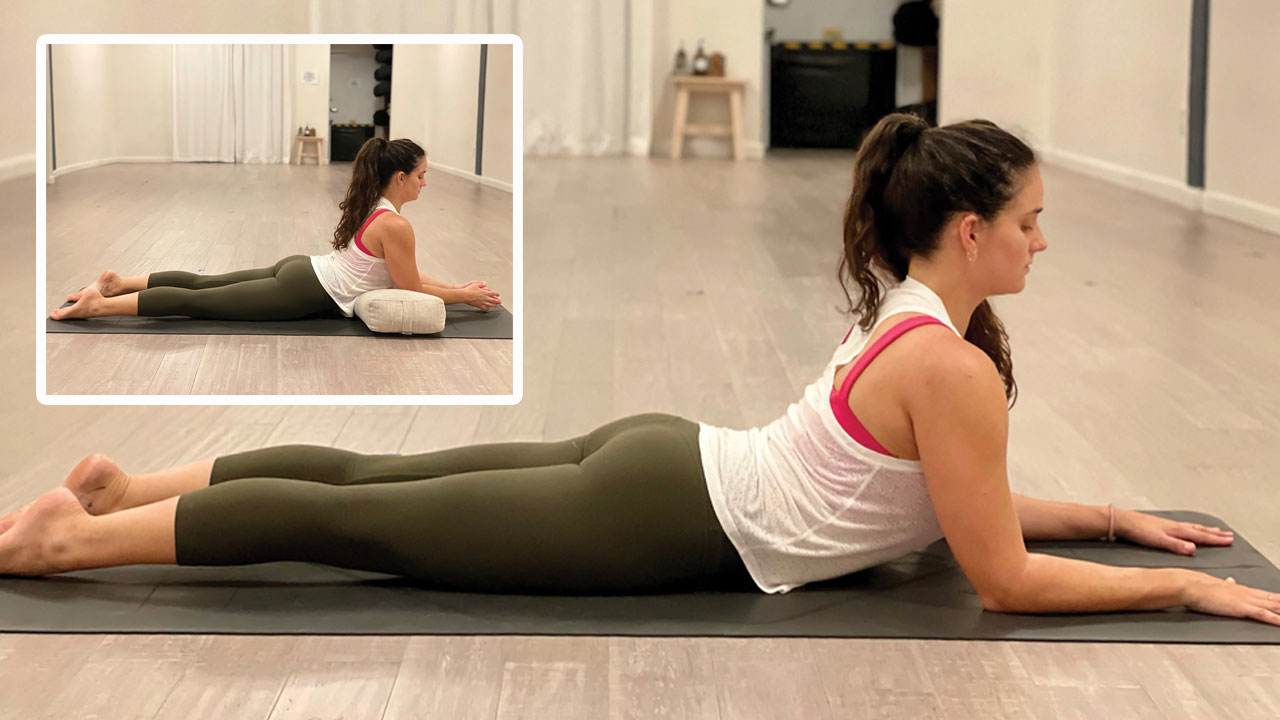
Sphinx
This is a good posture to feel into the anterior pelvic tilt in backbends. It gets you feeling into the low back, and sacrum and releasing any unnecessary tension.
There are two different ways of approaching this posture – both beneficial to your backbends:
First, by holding it passively. Relax the legs, glutes, even the head down if it gets too heavy and just allow the body to take up the space of the shape. If you feel too much compression in the low back, slide the elbows forward a bit.
The second way of using this posture is actively. Press the tops of the feet down into the mat and engage through the quadriceps by lifting the knee caps. The knees will most likely lift from the floor. Then press the pubic bone down into the floor, and the elbows down and towards the hips. This should give you the feeling that you're pulling the chest forward and through the shoulder blades. You're working towards creating space along the front side of the body, an important paradigm in all backbends. Move the ribcage up and away from the hips to continue emphasising this length through the front body.
This second version of sphinx, in particular, is very useful to establish the pattern in the body of moving the ribcage and hips away from each other to alleviate compression in the lower back that we so easily fall into when working towards deepening a backbending practice.
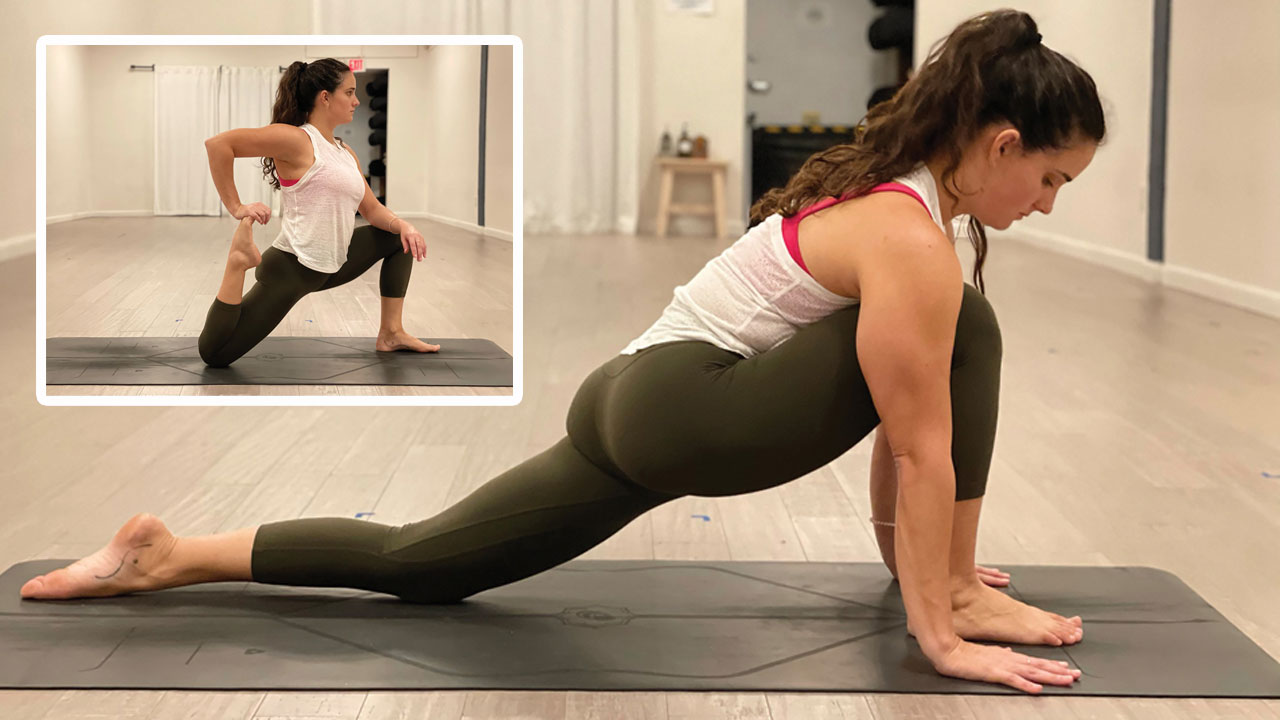
Lizard Lunge
As with many postures there are a number of ways of embodying this posture. The point remains the same for our backbending intention: to stretch the front of the hips or the psoas muscle. The psoas is a major muscle in the body that runs from the lumbar spine through the front of the hips and when tight can become an obstacle to backbending with ease.
For this posture, move the back knee further away to deepen and closer to the front leg to make it less intense. Keep the breath even and steady to help release the front of the hip down towards the floor. The hands can be on the floor or on the thigh, and the back knee can be resting on the floor or lifted with the back toes tucked under.
A variation of this posture to take you even deeper is to bring the back foot towards the glute. Keep bending into the front knee and releasing the front of the hip.
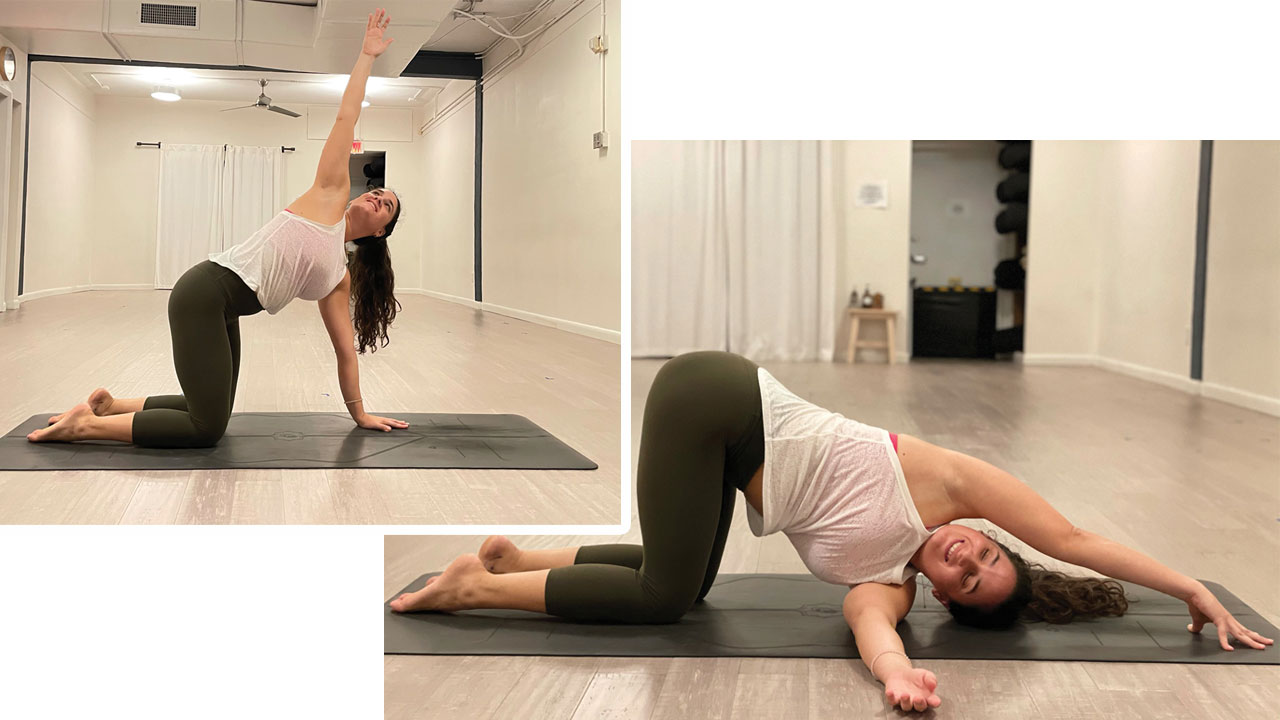
Thread The Needle
Having a mobile thoracic spine is also important to safely move into deeper backbends. Thread the needle is a great drill to help bring mobility to this part of the spine that's often difficult to access.
You can use this posture as a repetitive drill, moving the arm up and through for just one breath each, making sure to keep the hips in line with each other to ensure the rotation is coming from the upper back.
Another option is to hold the threading through part by relaxing the arm on the floor and taking the opposite arm over your head to aid in further releasing into the posture. This should create some extra space in the upper back that will come in handy when moving into the upper back in backbending — ultimately distributing the bend throughout the entire spine and alleviating compression in the lower back
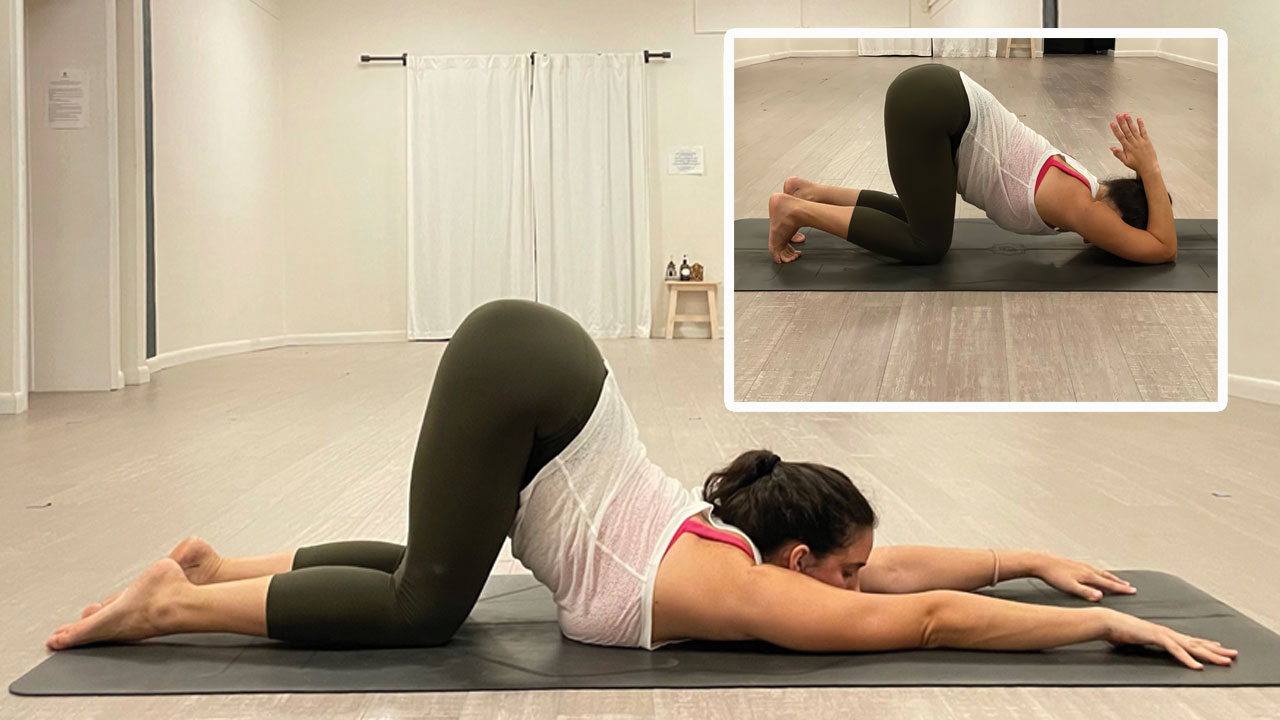
Puppy Pose
This is another great posture to keep creating mobility and space in the thoracic spine and crack open the heart. The upper back is not as easy to move into as the lower back for most people, so spending some extra time opening here will be very beneficial to your backbending practice.
Again, there are different ways of being in this posture. If the arms are overhead make sure to keep the shoulder externally rotated, with the shoulders moving away from the ears. The chin can be touching the floor for the deepest version or the forehead on the floor.
A modified version can be with the elbows on the floor bending the arms and placing the palms in prayer between the shoulder blades.
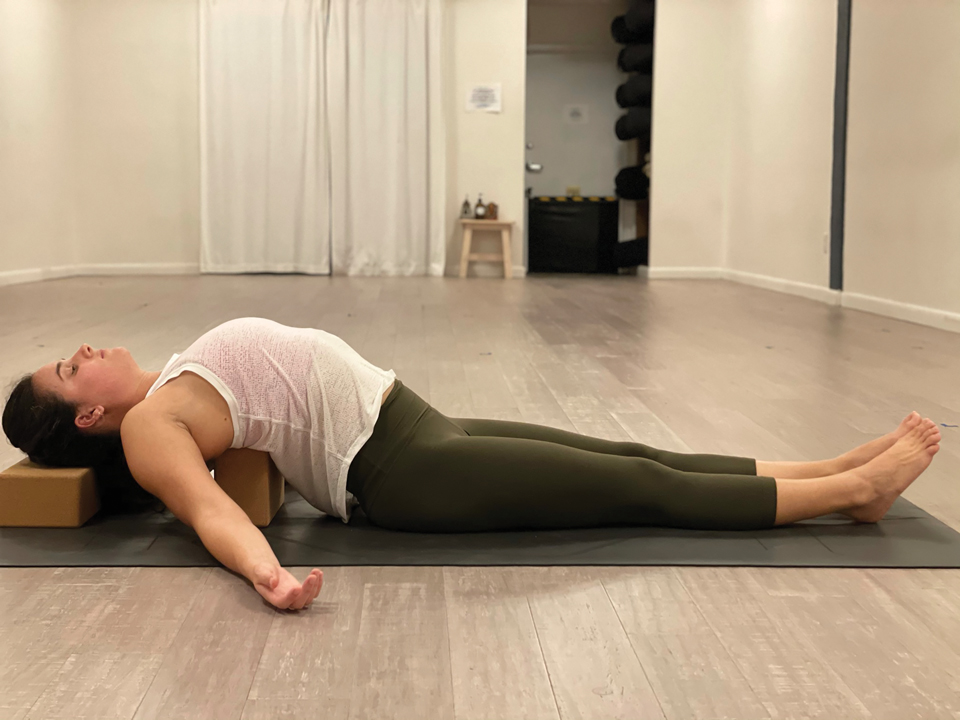
Supported Heart Opener
This last posture is to keep us opening the front body heart space in a more delicious, relaxing way.
Using a block just below the shoulder blades. Find a placement for the block that's comfortable for you that allows you to passively open. The block can be on the first, second or third level depending on how deep the body is able go. If you're on one of the higher levels feel free to place another block underneath the head for support.
Feel the body and heart melting around the blocks towards the floor. Stay here as long as it feels okay.
I hope these movements and postures help you wherever you may be in your yoga and backbending journey. Remember: accessing different parts of the body takes time and the most valuable quality you could bring to your practice is patience



